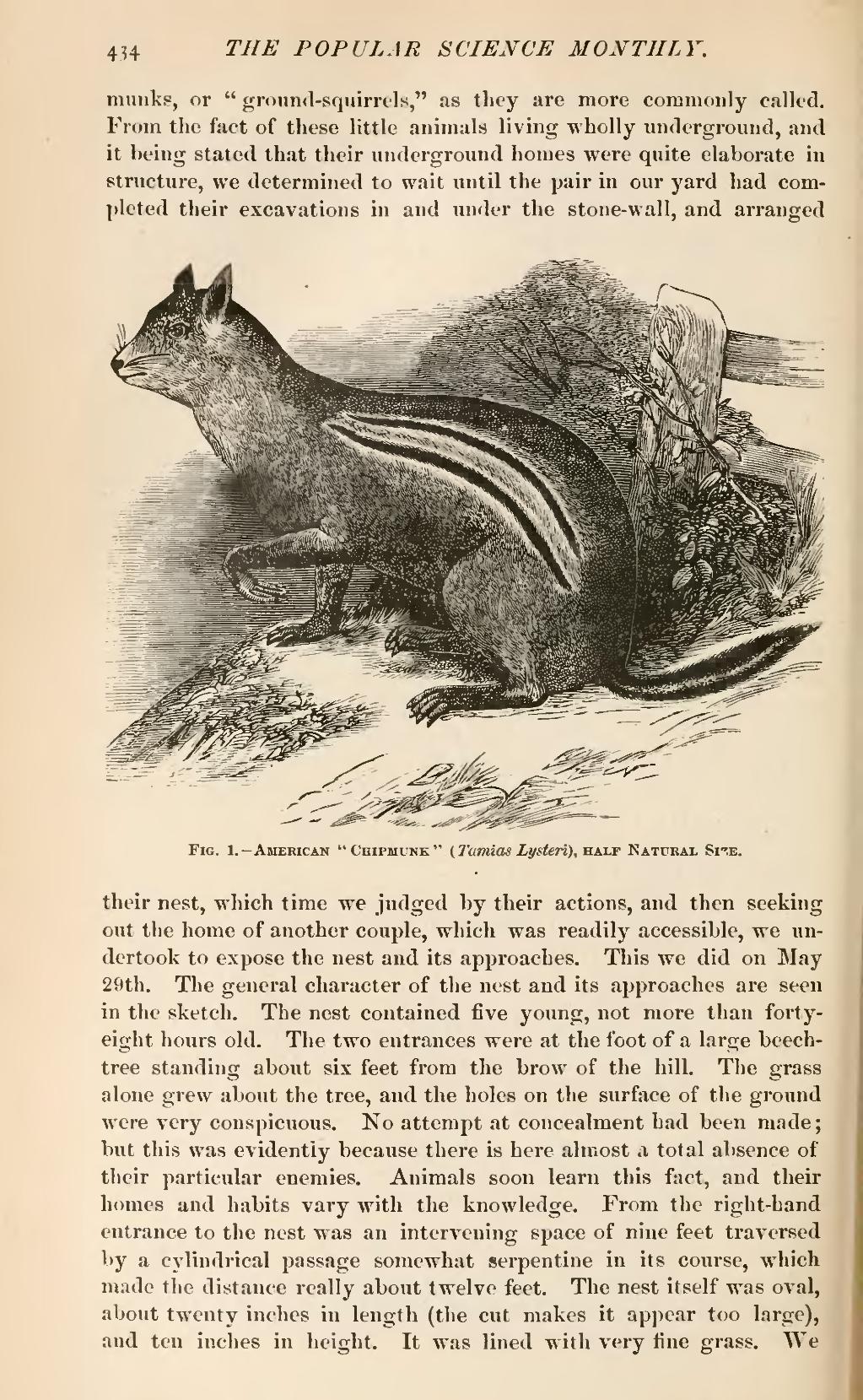munks, or "ground-squirrels," as they are more commonly called. From the fact of these little animals living wholly underground, and it being stated that their underground homes were quite elaborate in structure, we determined to wait until the pair in our yard had completed their excavations in and under the stone-wall, and arranged

Fig. 1.—American "Chipmunk" (Tamias Lysteri),half Natural Size.
their nest, which time we judged by their actions, and then seeking out the home of another couple, which was readily accessible, we undertook to expose the nest and its approaches. This we did on May 29th. The general character of the nest and its approaches are seen in the sketch. The nest contained five young, not more than forty-eight hours old. The two entrances were at the foot of a large beech-tree standing about six feet from the brow of the hill. The grass alone grew about the tree, and the holes on the surface of the ground were very conspicuous. No attempt at concealment had been made; but this was evidently because there is here almost a total absence of their particular enemies. Animals soon learn this fact, and their homes and habits vary with the knowledge. From the right-hand entrance to the nest was an intervening space of nine feet traversed by a cylindrical passage somewhat serpentine in its course, which made the distance really about twelve feet. The nest itself was oval, about twenty inches in length (the cut makes it appear too large), and ten inches in height. It was lined with very fine grass. We

